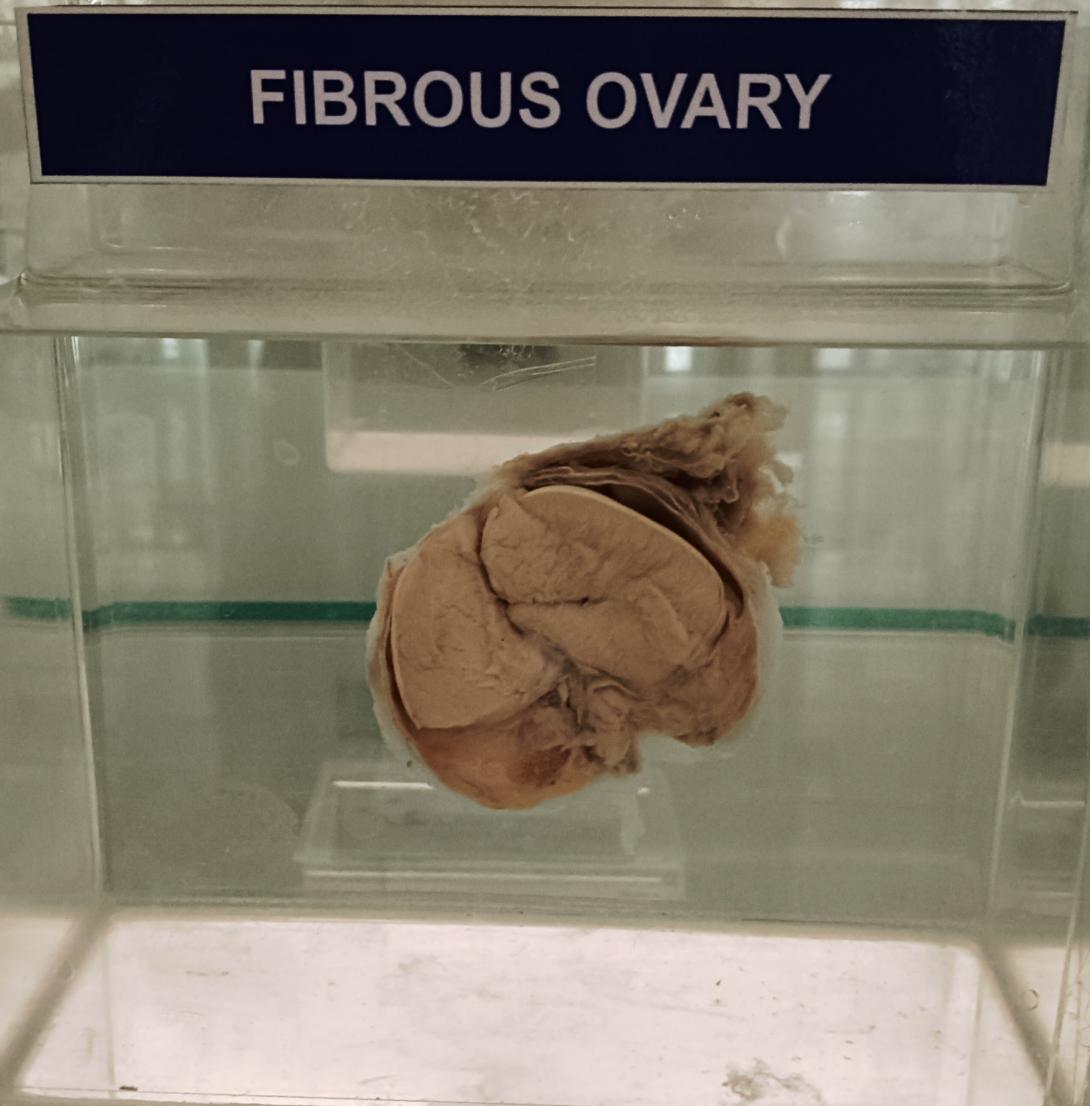Fibrosis refers to the formation of excessive fibrous connective tissue in an organ or tissue, which can lead to changes in its structure and function. In the context of the ovary, fibrosis can occur as a result of various conditions, including endometriosis, ovarian cysts, or certain types of tumors.
The gross anatomy of the ovary affected by fibrosis can include the following features:
- Size: The affected ovary may appear enlarged or swollen due to the accumulation of fibrous tissue.
- Texture: The ovary may feel harder or more firm compared to the normal, healthy tissue, due to the presence of fibrous tissue.
- Blood supply: The blood vessels supplying the affected ovary may be compressed or obstructed by the fibrous tissue, leading to ischemia and tissue damage.
- Tumors: In some cases, fibrosis of the ovary may be associated with the development of tumors, such as fibromas or fibrothecomas.
- Symptoms: The symptoms of fibrosis of the ovary can vary depending on the underlying condition. In some cases, there may be no symptoms, while in other cases, there may be pain, irregular menstrual periods, or fertility problems.
Treatment for fibrosis of the ovary depends on the underlying cause and may include medications, surgery, or other interventions to manage symptoms and prevent complications. It is important to note that fibrosis of the ovary can affect fertility and may require fertility treatments for conception.
Rack Number
Specimen Number
46

